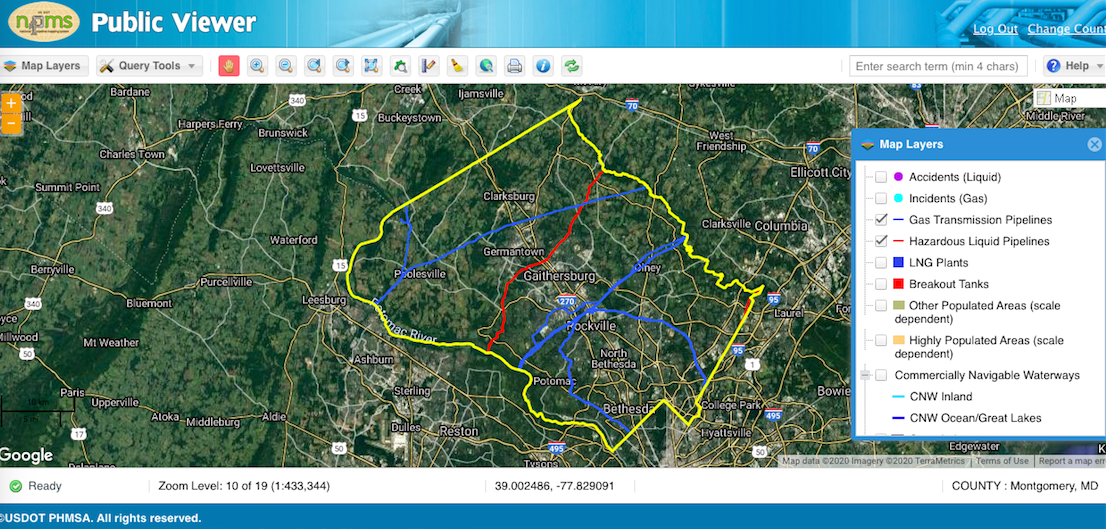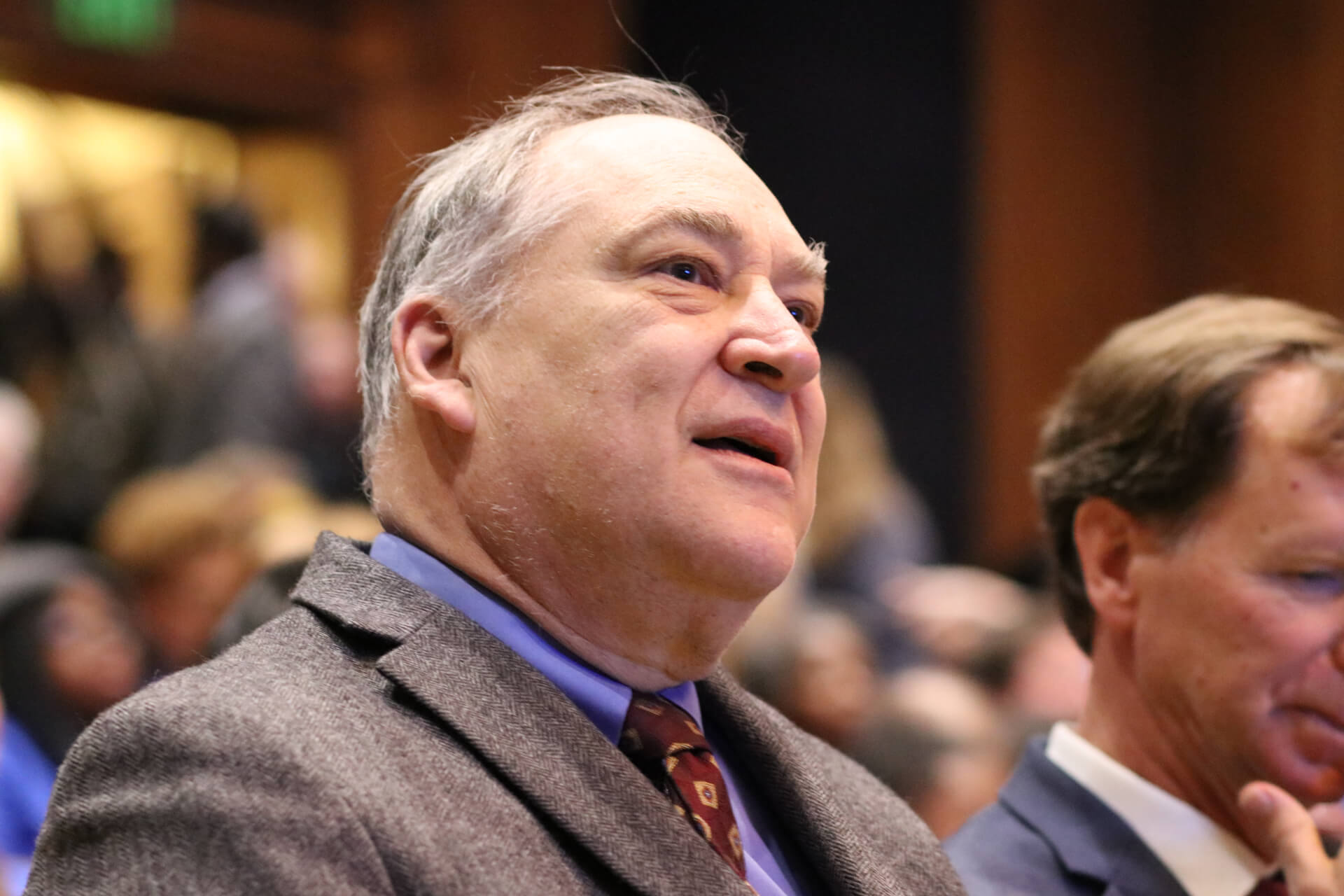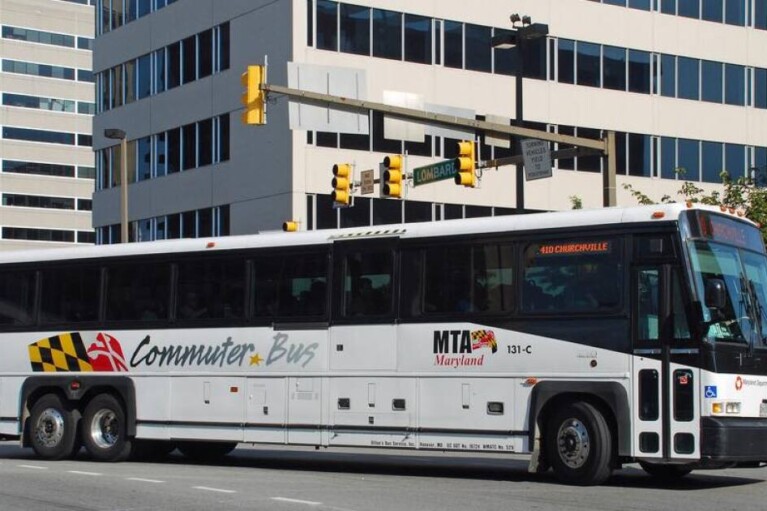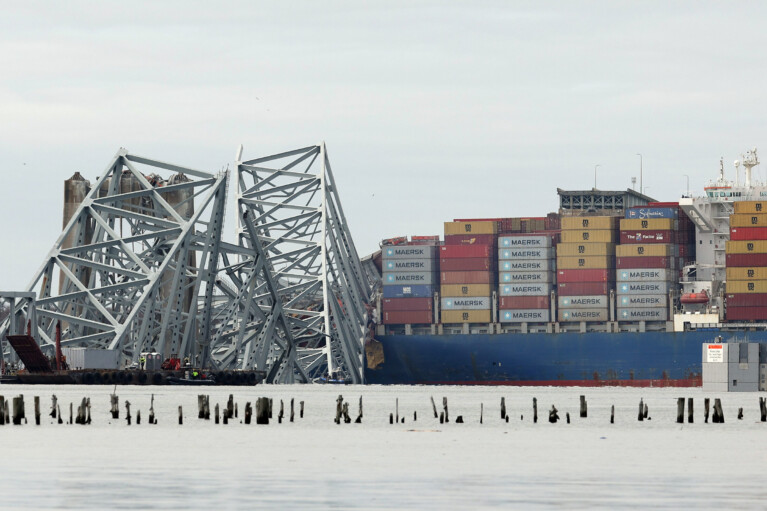2020 in Review: Labyrinth of Pipelines and Cables Could be Disrupted by Highway Plan ― And Who Pays?

Editor’s note: Between now and Jan. 3, we’re re-running 12 great articles that appeared in Maryland Matters in 2020, in chronological order. On Jan. 4, we’ll provide links to our best-read stories of the year. These are the stories you made possible by supporting our independent nonprofit newsroom.
This article from Maryland Matters reporter Bruce DePuyt first appeared on Oct. 28.
WSSC Water, the utility that provides water and sewer service to Prince George’s and Montgomery counties, made headlines in March when it disclosed that the state’s plan to widen two highways would likely result in as much as $1 billion in new expenses, to move numerous large pipes.
Members of WSSC Water’s governing board said they would have no choice but to pass that cost along to ratepayers. At the time, they estimated the average customer would pay an extra $2,250 per household over the next 20 years.
WSSC Water, it turns out, is just one of many companies with underground assets that could be impacted by the Maryland Department of Transportation’s plan to widen the Capital Beltway (Interstate 495) and I-270.
The agency has been meeting regularly with 21 utilities and private companies about the project, according to the state.
The companies provide services that Maryland residents and businesses rely on every waking hour — including water and sewer, electricity, gas, internet and cable television. There are state-of-the-art fiber-optic lines, installed relatively recently, and massive decades-old pipelines that carry oil through the Washington, D.C., region for multinational firms based in Canada.
Because the state is still in the process of considering which of several potential options it will choose for the highway project, there are no blueprints that companies can consult to determine whether they have buried assets that need moving. Nor can they can calculate a cost or negotiate with the State Highway Administration or its private-sector road-builders to determine who picks up the tab.
But the consequences of interrupting these utility services could be far-reaching and disruptive — to commuters, to residents, to ratepayers, and to the companies’ own operations. And the sheer number of entities with crucial infrastructure buried under the roads, disclosed here for the first time, has alarmed local leaders and members of the General Assembly, many of whom are already skeptical of the highway widening project.
“I wouldn’t even talk about a contract with [a potential concessionaire] until I knew every damn thing that was underground. And they don’t,” said Montgomery County Executive Marc B. Elrich (D) of state transportation officials. “And they don’t know the cost of moving everything underground — and that is not built into this.”
MDOT officials have said it is too early to know what it will cost to move power lines, pipes and fiber. Because the state is in the middle of the mandated public comment period on the Draft Environmental Impact Statement on the highway proposal, they are particularly constrained now, they said. The comment period closes Nov. 9.
But WSSC Water’s willingness to call attention to the issue — combined with the list of companies with buried assets obtained by Maryland Matters — is deepening concern for state and local officials who worry that their constituents will see their monthly bills rise, including those who are low-income, don’t drive, or won’t ever be able to afford Maryland’s new “express toll lanes” that are envisioned to help pay for the highway expansion.
“It’s another bait-and-switch,” said Del. Jared Solomon (D-Montgomery). “We’re being told that this won’t cost anybody anything — that it’s all going to be paid for by private companies and by tolls — and that’s nonsense. This is another way to pass the buck, hide the true cost and put it onto people who are being told they’re not going to have to spend anything.”
After six months of refusing to provide the list of companies with whom they have been meeting, MDOT officials furnished the list to Maryland Matters in September.
They fall into four categories:
* Water and sewer: WSSC Water, City of Rockville, DC Water and the U.S. Army Corps of Engineers, operators of the Washington Aqueduct.
* Electricity: PEPCO and BG&E.
* Gas: Washington Gas, Williams Companies (operators of the Transco pipeline), TC Energy (formerly TransCanada) and Colonial Pipeline
* Telecom: AT&T, CenturyLink, Comcast, Crown Castle, Fiber Light, RCN, Verizon and Zayo

A U.S. Department of Transportation website shows just a few of the major pipelines that run under Interstate 270 and the Capital Beltway. The red lines depict gas transmission pipelines. The blue lines show “hazardous liquid pipelines.”
Maryland Matters reached out to all of the companies whose engineers have been meeting with SHA quarterly since 2018. Only WSSC Water provided a detailed response.
Most others indicated it was too early in the process to determine whether their assets would be in path of the project, what their costs would be or whether the state’s private funding and construction partner would pick up the expense.
Several firms refused to comment, either for competitive reasons or to avoid impacting their relationship with a key state agency.
A representative of one firm, speaking on condition of anonymity to discuss the project candidly, said the utility expects it will have to eat any costs related to the project.
“We are generally not reimbursed on relocation projects,” the representative said. “My construction lead… doesn’t have any more detail at this stage.”
City of Rockville spokeswoman Marylou Berg said the city has five utility lines that run under I-270. The largest is 24 inches in diameter.
“Rockville’s buried utilities within the I-270 right-of-way are sanitary sewer and water system assets and it has yet to be determined what needs to be moved or protected during the P3 project,” she said. “Rockville has not developed cost estimates for this work. Costs associated with relocating or protecting Rockville’s buried assets has not been discussed with SHA.”
In pushing the project over the last three years, Gov. Lawrence J. Hogan Jr. (R) has said that no homes or businesses will be taken to expand the two highways and that the project — a public-private partnership, or P3 — can be built “at no net cost to the state.”
Officials, particularly in Montgomery and Prince George’s counties, where criticism of the project has been intense, now wonder if either of those promises will be borne out.
“Why should any of our ratepayers pay for it, especially when you said on TV it wouldn’t cost us anything,” said Montgomery Councilmember Tom Hucker (D). “People that will never be able to afford your managed lanes — or who can’t even afford a car, much less drive it on managed lanes — will be stuck with the bill.”
Maryland-National Capital Park and Planning Commission staff, who have been critical both of MDOT’s plan and the agency’s level of cooperation with local officials, also flagged the issue of utility relocation.
“The revenue model as presented in the [Draft Environmental Impact Statement] demonstrates that toll roads, much like transit, can’t be paid for without some level of government subsidy,” they wrote in a report.
“Not only are the financial assumptions on which MDOT SHA relies too speculative, but the basic project costs are omitted, such as a lack of consideration to relocate utilities and water and sewer lines, likely project delays due to litigation, design difficulties and land acquisition challenges — similar to what has happened with the Purple Line.”
Elrich has said he is eager for the state to develop a plan to ease some of Montgomery’s notorious traffic problems, but he wants the state to start with the American Legion Bridge, a chronic chokepoint. He is also pressing for two reversible lanes on I-270, not two new lanes in each direction.
In an interview, he said big unanswered questions about utility costs could impact the eventual concessionaire’s ability to borrow to finance the project.

Montgomery County Executive Marc B. Elrich (D). Photo by Danielle E. Gaines.
“That’s not something that the bond is going to pay for and that the owner of the bond is going to want to take on,” he said. “These are all state liabilities. And the idea that we would expose ourselves to that without fully understanding the liabilities, costs and potential risks does not make sense.”
Wide-ranging impact
Maryland’s road widening project could also impact residents of the District of Columbia.
DC Water spokesman John Lisle said the Potomac Interceptor (PI), a 78-inch reinforced concrete pipe with approximate average flow of 45 million gallons per day, “is a sewer line that carries flow from Dulles Airport, across the Potomac, and then down the Maryland/DC shoreline to Blue Plains [wastewater plant] for treatment.”
“We have not developed a cost estimate for relocating the PI,” he added. “However, sections of the pipe were already included in DC Water’s [Capital Improvements Program] as part of a project that would rehabilitate the PI segment under I-495 as well as three other segments.”
“This is the subject of ongoing discussions,” Lisle said. “The schedule for DC Water’s CIP, based on other more pressing priorities for the Authority, may not overlap with MDOT’s schedule. There is no agreement in place at this time.”
MDOT officials refused to be interviewed for this report but did provide a statement from spokeswoman Erin Henson, saying “it is too early to determine what the cost would be to relocate any utilities.” She said the project plans provide incentives to the developer “to work with the community to reduce impacts to the community or utilities from this critical project.”
The state, Henson added, “is focused on finding the right partner to collaborate with all the stakeholders, including other agencies, communities and the utility companies.”
None of the elected officials contacted by Maryland Matters said they were aware that so many companies have costly assets in the potential path of the project.
“It’s a lack of transparency. It’s a lack of full disclosure,” said Solomon. “This is a pretty sizable number.”
“It’s going to touch a lot of people,” he added. “And it’s going to potentially mean a lot of money that a lot people are going to have to shell out on their monthly bills. Again, this is why trying to rush this through is the wrong way to go about it.”
Samantha Hawkins contributed to this report.
Did someone forward this to you? Get your own daily morning news roundup in your inbox. Free. Sign up here.




 Creative Commons Attribution
Creative Commons Attribution